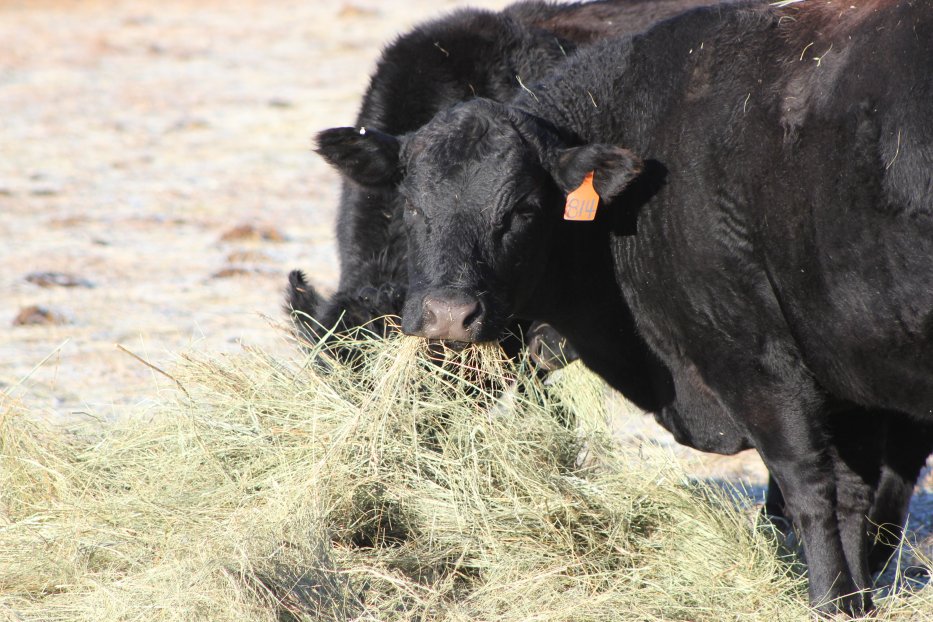
By Daren Redfearn, UNL Forage and Crop Residue Systems Specialist; Mary Drewnoski, UNL Beef Systems Specialist; and Jay Parsons, UNL Biosystems Economist
To answer the question, “is my hay feeding program meeting the cowherd’s nutritional requirements?”, two key pieces of information are needed. The first piece of information to obtain is the animal nutritional needs. Nutrient requirements are not consistent for all classes of livestock, so some knowledge of their body weight and stage of production is also required. Your Extension Educator can provide information on determining beef nutrient requirements. The next piece of information is the results from a forage analysis. At a minimum, it is important to know the crude protein (CP) and total digestible nutrient (TDN) values for hay supplies. Most forage quality analyses cost $10 to $20 per sample.
During the winter hay feeding period, it will take about 1000 pounds (DM basis) of grass hay to feed an 1100-pound mature cow for 30 days. This is equivalent to 28 pounds (DM basis) of hay per day. The following example can be used to help explain the relationship between forage quality and stage of production. In a 1000-pound bale of medium-quality grass hay with 7.0% CP (DM basis) and 58% TDN (DM basis), there are 70 pounds of CP and 580 pounds of TDN. The nutritional requirements for a mature cow during the middle 1/3 of gestation is 1.4 pounds of CP (DM basis) and 9.7 pounds of TDN (DM basis) each day. From a couple of simple calculations (Table 1, http://go.unl.edu/0ia7), the 30-day CP requirement for this animal is 42 pounds and the TDN requirement is 291 pounds. This hay should be adequate to maintain the 1100-pound mature cow during the middle 1/3 of gestation if her daily DM hay consumption is at least 28 pounds.
The nutrient requirements for the same 1100-pound cow the first 90 days after calving increase to 2.9 pounds of CP (DM basis) and 16.8 pounds of TDN (DM basis) each day. Assuming she consumes 28 pounds (DM basis) of hay per day, both her protein and energy requirements will be deficient. In this instance, both additional protein and energy should be provided to meet the increased nutritional requirements.
It would require about 4 pounds per day (DM basis) of distiller’s grains to meet the 17-pound CP deficiency of an animal during the first 90 days after calving if she were consuming medium-quality grass hay containing 7.0% CP (DM basis) and 58% TDN (DM basis). At a cost of $125 per ton for the supplement, the cost of supplementation would be $0.25 per day. However, this supplementation is not needed during the middle 1/3 of gestation. In this example, over-supplementing a 100-cow herd for 90 days during the middle 1/3 of gestation would result in unnecessary feed costs of $2,250. Greater profit potential is the primary reason livestock producers need to know the quality of the forages they are feeding. The cost to determine if additional protein or energy feeding is needed can be quickly recovered in either feed cost savings or improved animal performance.